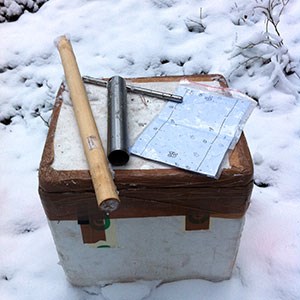Kontaktinformation
Malin Elfstrand
Professor vid Institutionen för skoglig mykologi och växtpatologi; Avdelningen för skoglig patologi
malin.elfstrand@slu.se, 018-671579

Hos oss kan du göra examensarbeten inom såväl tillämpade som mer grundläggande ämnen. Vi erbjuder examensarbeten inom till exempel växtpatologi, skogspatologi, naturvård, populationsbiologi, genomik, markbiologi och kol- och kvävecykler i marken.
Om du är intresserad av att göra ett examensarbete hos oss ta kontakt med institutionsstudierektorn eller någon av forskarna vid institutionen. Exempel på tidigare examensarbeten vid instuitutionen hittar du i den blå boxen längre ned på sidan.
Examensarbetet omfattar vanligen 20 veckors heltidsstudier (30hp). Du arbetar självständigt tillsammans med handledare från institutionen och ev. även från företag, myndighet eller andra institutioner. När du bestämt projekt och kommit överens med handledare tar ni kontakt med studierektor vid institutionen som ser till att du är registrerad, att det utsetts examinator och att en arbetsplan upprättas och skrivs under. Examensarbeten kan vara klassade i olika ämnen beroende på vilket program du går. Vi ger Examensarbeten i biologi, markvetenskap och skogsvetenskap. För att vara behörig krävs minst 30 hp på avancerad nivå i det ämnet för ditt examensarbete.
För jägmästarstudenter finns det även möjlighet att göra examensarbeten på 60 hp (40 veckor). Dessa genomförs som en del i pågående forskningsprojekt resultaten publiceras i en vetenskaplig artikel. Om du är intresserad av forskarutbildning är det en bra möjlighet att få prova en större utmaning och få en inblick i verksamheten i en forskargrupp och på institutionen!
Second cycle, A2E
Second cycle, A1E
First cycle, G2E
Oomycetpatogenen Aphanomyces euteiches orsakar rotröta hos olika baljväxtarter som till exempel ärter (Pisum sativum L.). Aphanomyces rotröta är den stora begränsningen för ökad ärtproduktion i Europa och kan orsaka mycket höga skördeförluster och påverka kvaliteten negativt. Sista ansökningsdag för det här projektet är 30 april 2022.
Vi söker en motiverad, pålitlig student med ett stort intresse för växtförädling och fytopatologi. Grundläggande kunskaper om statistik och R, samt grundläggande labberfarenhet är meriterande. Arbetet skrivs på engelska.
Läs mer om projektet Disease resistance in pea towards the root rot pathogen Aphanomyces euteiches här.
Beskrivning på engelska: The fungal pathogen Hymenoscyphus fraxineus causing Ash dieback (ADB) disease has spread rapidly on the European continent, threatening common ash (Fraxinus excelsior) with extinction. This project aims to study variation in trees with varying levels of tolerance to ADB. The focus of the project is COUMARIN SYNTHASE (COSY). The COSY enzyme is involved in the biosynthesis of coumarins, catalysing the biosynthesis of the defensive compounds fraxetin and esculetin. These compounds are known to help ash trees to tolerate ADB.
Based on available genomic information, we hypothesize that allelic variation in COSY between tolerant and susceptible trees can explain the higher levels of coumarin accumulation in trees with high tolerance to ADB. To test this hypothesis, we plan to i) identify and isolate the COSY genes in ash; ii) compare the sequence variation in trees with known levels of tolerance to ADB and known levels of fraxetin and esculetin iii) express ash COSY in a heterologous system and determine its catalytic properties.
In this project you would work in close interaction with researchers at the Irish Agriculture and Food Development Authority (TEAGASC) and Queen Mary University of London.
For further information, please contact:
Malin Elfstrand
Forest Mycology and Plant Pathology, SLU
Malin.Elfstrand@slu.se, 018-671579
Miguel Nemesio Gorriz
Teagasc Food Research Centre,
miguel.nemesiogorriz@teagasc.ie, +353 (0)18059551 / +353 (0) 873504965
Malin Elfstrand
Professor vid Institutionen för skoglig mykologi och växtpatologi; Avdelningen för skoglig patologi
malin.elfstrand@slu.se, 018-671579